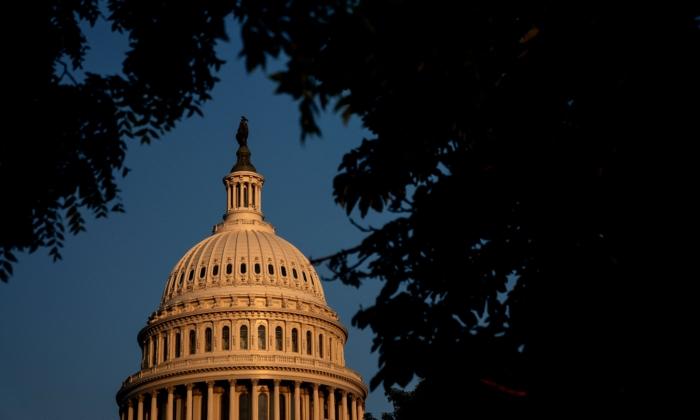The U.S. government’s budget deficit surged in May from the same time a year ago, as federal revenues declined and Medicare spending soared, new Treasury Department data revealed.
In the first eight months of the current fiscal year, the cumulative deficit totaled $1.165 trillion, up from $426 billion last year.
Treasury figures found that revenues declined 21 percent year-over-year to $307 billion, with higher tax return payments and non-withheld individual income taxes amid a softening economy slashing receipts. Outlays surged 20 percent from May 2022 to $548 billion, driven by a substantial increase in spending for the government-run Medicare health program for seniors.
Rising interest payments have also played a major role in the ballooning deficit. In May, net interest payments were $61 billion, bringing the fiscal year-to-date total to $424 billion.
Over the past 12 months, cumulative deficits have surpassed $2 trillion, or 8.1 percent of the gross domestic product (GDP), according to the Committee for a Responsible Federal Budget (CRFB).
‘Serious Change’
Maya MacGuineas, president of the CRFB, warned that the nation’s fiscal outlook requires a “serious change; to argue otherwise is a charade bordering on a farce.”“Today’s Treasury numbers serve as a stark reminder that our fiscal challenges are far from over. Much more will need to be done to ensure we don’t burden future generations with a smaller economy and a larger national debt,” MacGuineas said in a statement.
The Peter G. Peterson Foundation, a think tank dedicated to addressing economic and fiscal challenges, is concerned that interest, Social Security, and Medicare will continue to accelerate spending levels.

Meanwhile, the public is beginning to become more concerned about the country’s finances.
“Both Republicans and Democrats are more likely now than in 2022 to say this should be a top priority, but Republicans are still much more likely to prioritize this than Democrats are (71 percent vs. 44 percent),” Ted Van Green, a Pew research analyst, reported.
The U.S. is projected to record a $1.5 trillion budget deficit in the current fiscal year.
Debt Ceiling Agreement
This was the first monthly summary of the federal government’s finances since President Joe Biden and House Speaker Kevin McCarthy (R-Calif.) reached an agreement to suspend the debt limit until January 2025 and avert a default.The CRFB is ebullient over the Fiscal Responsibility Act (FRA), describing it as the first step in restoring fiscal disciple in the nation’s capital. However, with deficits still mushrooming, “substantial policy change will be needed to bring spending and revenue in line.”
“The roll-off (and possible reversal) of student debt cancellation and implementation of the Fiscal Responsibility Act are likely to help reduce deficits in the near term, but much more action will be needed to stem the unsustainable medium- and long-term trajectory of the debt,” it wrote.
Biden has repeatedly touted his record on the deficit and the FRA’s benefits.





